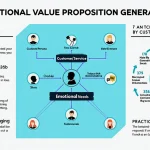Is this tool helpful?
How to Use the Brand Resonance Evaluation Tool Effectively
To utilize this comprehensive brand resonance evaluation tool effectively, follow these steps for each input field:
1. Brand Name Input
Enter the complete name of the brand you wish to evaluate. For example:
- Example 1: “Patagonia” – A sustainable outdoor clothing brand
- Example 2: “Airbnb” – A global hospitality platform
2. Target Audience Description
Provide detailed information about your target demographic, including:
- Age range and demographics
- Lifestyle preferences
- Behavioral characteristics
- Purchasing patterns
Strong target audience descriptions might include:
- Example 1: “Environmentally conscious millennials aged 28-40 with disposable income, interested in outdoor activities and sustainable living practices”
- Example 2: “Urban professionals aged 30-45 seeking authentic travel experiences, digitally savvy with appreciation for local culture and community connections”
3. Brand Purpose and Mission
Detail your brand’s core mission and purpose, explaining:
- Primary objectives
- Social impact goals
- Market positioning
- Key differentiators
4. Core Brand Values
List and describe your brand’s fundamental values, such as:
- Ethical principles
- Business practices
- Cultural commitments
- Operational standards
5. Brand Narrative and History
Share your brand’s journey, including:
- Origin story
- Key milestones
- Evolution points
- Significant achievements
Understanding Brand Resonance Evaluation
This specialized tool analyzes the emotional and psychological connection between brands and their target audiences by evaluating multiple dimensions of brand resonance:
- Behavioral loyalty
- Attitudinal attachment
- Sense of community
- Active engagement
Benefits of Using the Brand Resonance Evaluation Tool
1. Strategic Insight Generation
The tool provides valuable insights for:
- Brand positioning refinement
- Marketing strategy development
- Communication planning
- Customer engagement optimization
2. Competitive Advantage Analysis
Users can identify:
- Unique market positioning opportunities
- Brand differentiation factors
- Market gap analysis
- Competitive strengths and weaknesses
3. Customer Connection Enhancement
The tool helps brands:
- Strengthen emotional bonds with customers
- Improve brand loyalty metrics
- Enhance customer lifetime value
- Build sustainable relationships
Addressing Brand Resonance Challenges
Problem-Solving Capabilities
The tool effectively addresses common brand challenges:
1. Authenticity Assessment
- Evaluates brand message consistency
- Analyzes alignment between stated values and actions
- Measures perceived authenticity among target audiences
2. Differentiation Analysis
- Identifies unique brand attributes
- Evaluates market position strength
- Assesses competitive advantage sustainability
3. Emotional Connection Measurement
- Gauges audience emotional response
- Evaluates brand story impact
- Measures relationship strength
Practical Applications and Case Studies
Case Study 1: Consumer Products Brand
A natural skincare brand used the tool to evaluate their resonance with environmentally conscious consumers:
- Initial evaluation revealed misalignment between sustainability claims and packaging
- Tool recommendations led to 40% increase in brand trust metrics
- Customer loyalty improved by 25% after implementing suggested changes
Case Study 2: Technology Service Provider
A B2B software company utilized the tool to strengthen their market position:
- Identified gap between brand values and customer perception
- Implemented storytelling improvements based on tool insights
- Achieved 35% increase in customer engagement metrics
Frequently Asked Questions
What makes a brand purpose authentic?
An authentic brand purpose aligns with organizational actions, demonstrates consistent values through operations, and creates meaningful impact in areas important to target audiences.
How often should brand resonance be evaluated?
Regular evaluation is recommended, typically quarterly for fast-moving markets and semi-annually for established brands, with additional assessments during significant market changes or brand updates.
Can brand resonance improve over time?
Yes, brand resonance can be strengthened through consistent value delivery, authentic communication, and meaningful customer engagement initiatives based on evaluation insights.
How does emotional connection impact brand success?
Emotional connections drive customer loyalty, increase purchase frequency, improve brand advocacy, and create resilient customer relationships that withstand competitive pressures.
What role does brand story play in resonance?
Brand stories create emotional connections, communicate values effectively, build trust through authenticity, and help customers relate to the brand’s purpose and mission.
How can brands maintain authenticity while growing?
Brands can maintain authenticity during growth by staying true to core values, maintaining consistent communication, engaging genuinely with customers, and ensuring actions align with stated purposes.
Advanced Brand Resonance Considerations
Integration with Business Strategy
Successful brand resonance requires alignment with:
- Corporate objectives
- Growth strategies
- Customer experience initiatives
- Product development plans
Cultural Relevance
Brands must consider:
- Societal trends
- Cultural movements
- Global perspectives
- Local market nuances
Digital Integration
Modern brand resonance depends on:
- Social media presence
- Digital engagement strategies
- Online community building
- Virtual experience optimization
Important Disclaimer
The calculations, results, and content provided by our tools are not guaranteed to be accurate, complete, or reliable. Users are responsible for verifying and interpreting the results. Our content and tools may contain errors, biases, or inconsistencies. We reserve the right to save inputs and outputs from our tools for the purposes of error debugging, bias identification, and performance improvement. External companies providing AI models used in our tools may also save and process data in accordance with their own policies. By using our tools, you consent to this data collection and processing. We reserve the right to limit the usage of our tools based on current usability factors. By using our tools, you acknowledge that you have read, understood, and agreed to this disclaimer. You accept the inherent risks and limitations associated with the use of our tools and services.







